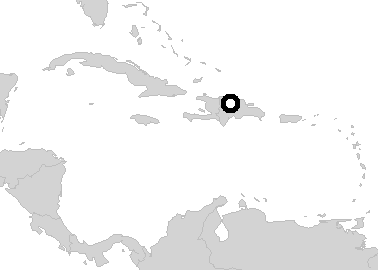
| www.CuriousTaxonomy.net |
|
The Flood in World Myth and Folklore
Caribbean |
| © 2021 Mark Isaak |

A mighty chief named Jaia buried his only son, according to custom, in a gourd [Crescentia cujete]. Some months later, distracted by his loss, Jaia visited the gourd to contemplate the bones of his son. He pried it open and saw great whales and other enormous sea creatures come forth. The chief later reported to some of his neighbors that the sea was contained in that gourd. This story came to the ears of four brothers, born at the same birth and whose mother had died at their birth. They sought to possess the gourd for the sake of the fish which could be obtained from it. But Jaia happened to arrive while the four brothers held the gourd in their hands. Frightened at being caught in the act, they dropped the gourd and fled. The gourd shattered, and there issued forth a mighty flood. The water spread until it overflowed the earth and formed the ocean, leaving only the tops of the mountains uncovered, which are the present islands.
The four brothers fled from Jaia in four directions, almost dying of hunger because they dared not stop. Pressed by hunger, they stopped at the door of a baker and begged for some bread. The baker spat with great force upon the first brother, by which an enormous tumor was formed upon him. The other brothers opened the tumor with a sharp stone, and from it emerged a woman, who became the wife of each brother in turn, bearing them sons and daughters.
Anghiera, Pietro Martire d', De Orbe Novo: The Eight Decades of Peter Martyr d'Anghera. Transl. Francis Augustus MacNutt (New York: G.P. Putnam's Sons, 1912), vol. 1, book 9: 170-171; see also Fray Ramón Pané, An Account of the Antiquities of the Indians, transl. Susan C. Griswold (Durham and London: Duke University Press, 1999), 13-16.

The foreword of the source of this myth notes that it was pieced together from fragments, and very likely parts were added to fill out the narrative. The human survival story almost certainly comes mostly from Europe.
The Sun's bride was the gooddess of the waves, and their son, Vagoniona, became father of all mankind. The Earth had come from another world, in the clouds of a far-off sky, created by Yocaunagua-Maonocon. When she was still young, the Earth began to play with the Waters. The Waters, much older than the Earth, thought the Earth was becoming too bold. The Earth shook her green crown above them; she nourished the people that Vagoniona now let into the light; and she boasted of being the Mother of Nature. When the Waters began to roil with fury, the Earth laughed innocently and tossed their waves back off of her rocks.
The Waters appealed to the evil spirit Mabuya to allow them to punish the Earth. He agreed, and there began terrible rains and rising sea. The Earth was covered over, her smile cut short, and all of her possessions stripped.
One man, being wise, had been warned by the Cemies, the sacred wood and stone images consulted by priests. He built a large canoe and put aboard it his household and flocks. In time the flood subsided. The man sent out a vulture to search for others, but it instead fed on the drowned bodies. Only the people and creatures of the one canoe survived.
Florence Jackson Stoddard, As Old as the Moon: Cuban Legends: Folklore of the Antillas (New York: Doubleday, 1909), 5-11, 83.
